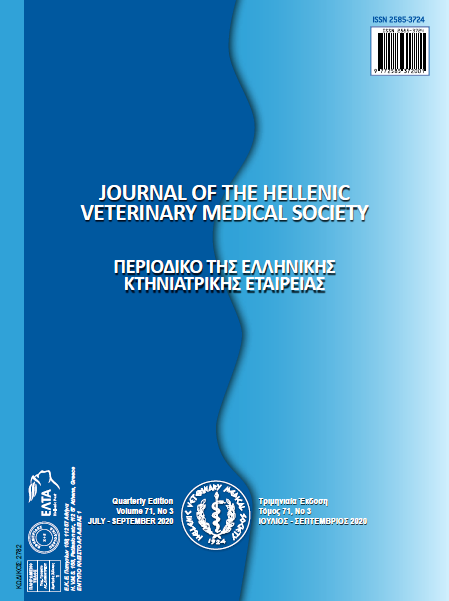First isolation of Mycobacterium bovis SIT 482 BOV from beef cattle in Turkey

Abstract
Bovine tuberculosis is a zoonotic disease which should be emphasized in our country as in many countries. A large number of genotypes have been revealed by spoligotyping method of M. bovis in the world. M. bovis SIT 482. BOV is one of these genotypes and it is also M. bovis genotype in which BCG vaccine is administered in humans. The BCG vaccine is obtained through multiple passages of this genotype. However, this genotype, like other genotypes, can cause serious infections in humans and animals. There are data on the isolation of M. bovis SIT 482 BOV from animal and human tuberculosis cases in the world. In our country, the isolation of this genotype has been reported only in humans and no data have been found in the animals. In this study, M. bovis SIT 482. BOV was isolated from the samples of six cattle with internal organ samples obtained from licensed slaughterhouses in Aksaray. While isolation is carried out with BACTEC MGIT 960 liquid media, spoligotyping was carried out according to the manufacturer’s with kit (Isogen LifeScience, The Netherlands). This study aims to report M. bovis SIT 482 BOV from cattle in Turkey for the first time, to draw attention a very limited number reported in M. bovis cases in Turkey, highlight the importance of genotyping of tuberculosis factors and contribute to epidemiological studies. These and similar studies will contribute to the creation of genetic maps for eradication of M. bovis from cattle in our country. The study was also conducted to investigate whether M. bovis SIT 482. BOV isolated from cattle in Aksaray province is BCG strain or another strain giving the same pattern.
Article Details
- How to Cite
-
AVSEVER, M., ÇAVUŞOĞLU, C., & ÇAMKERTEN, I. (2020). First isolation of Mycobacterium bovis SIT 482 BOV from beef cattle in Turkey. Journal of the Hellenic Veterinary Medical Society, 71(3), 2279–2282. https://doi.org/10.12681/jhvms.25073
- Issue
- Vol. 71 No. 3 (2020)
- Section
- Research Articles

This work is licensed under a Creative Commons Attribution-NonCommercial 4.0 International License.
Authors who publish with this journal agree to the following terms:
· Authors retain copyright and grant the journal right of first publication with the work simultaneously licensed under a Creative Commons Attribution Non-Commercial License that allows others to share the work with an acknowledgement of the work's authorship and initial publication in this journal.
· Authors are able to enter into separate, additional contractual arrangements for the non-exclusive distribution of the journal's published version of the work (e.g. post it to an institutional repository or publish it in a book), with an acknowledgement of its initial publication in this journal.
· Authors are permitted and encouraged to post their work online (preferably in institutional repositories or on their website) prior to and during the submission process, as it can lead to productive exchanges, as well as earlier and greater citation of published work.


